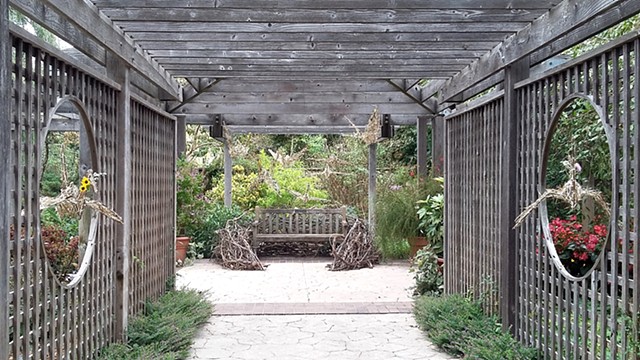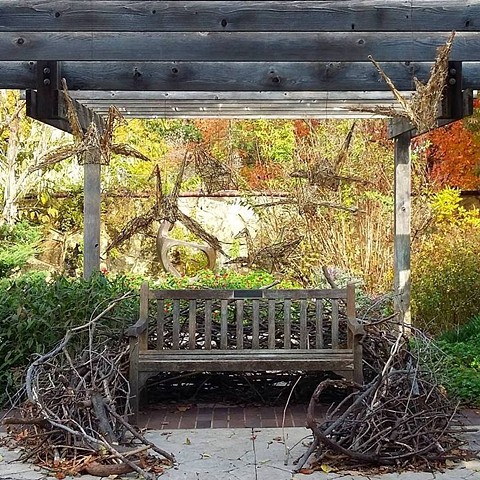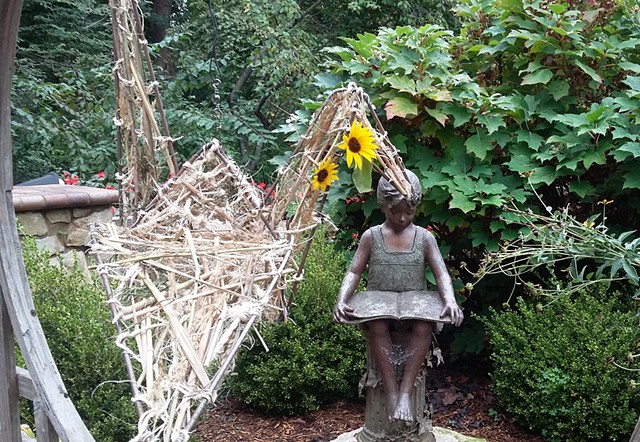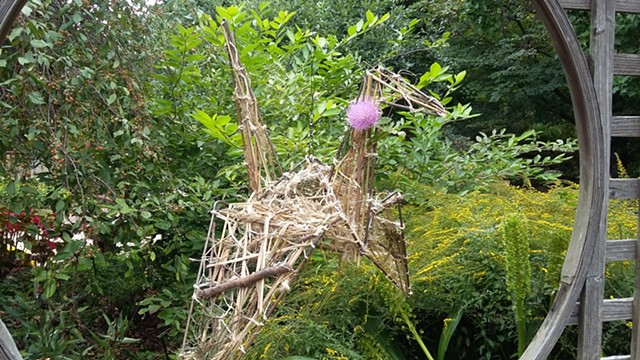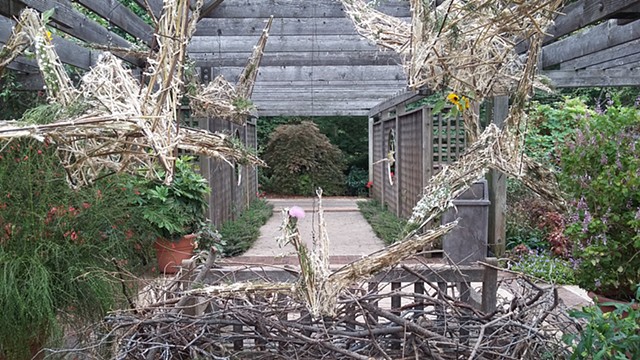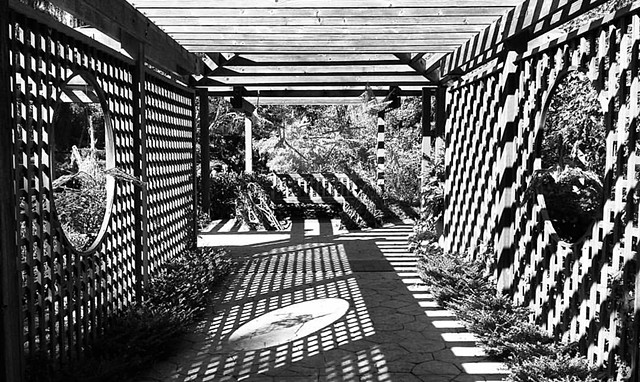Prairie Origami Cranes and Nest
A sojourner’s life is like the life of a bird. They fly from place to place, while they carry things from the previous places and adapt to the new place.
I am from Japan but have been living in the United States, in Kansas, for 20 years now. Although I consider Japan as my original earthly home, I have adapted many aspects of my life to the U.S. as well. This cultural hybridity makes me search for the place where I fully call home.
The origami crane in this work represents my cultural identity and the state of flux and traveling. I made the structure of the origami crane with steel rods. The material of steel is strong and durable, which reminds me that my cultural background has always been strong in me even though I have lived in a foreign country for a long time. For the armature of the surface of the cranes, I kept tying knots with twines and wires thinking that I made relationships with people and places wherever I went. I covered the surface of the cranes with natural materials such as tall grass, flowers, leaves, and twigs that are found in Kansas, just like many aspects of my life in Kansas has been adapted in my life. A bench is placed under the suspended cranes, which invites viewers to have a seat to be a part of this piece. The huge nest-like structure made of tree sticks around the bench represents a notion of “home.”
Since this piece is installed outdoors, the steel rusts, flowers fade, and the leaves and grass shrink and change their color as time goes by. I see this as a part of the process of our lives.
This piece was temporarily installed at Botanica, a botanical garden in Wichita, KS. In this site, there are two circular shaped windows on the arbor walls; this space looks like a traditional Japanese room with circular windows, which was the first inspiration for this work.
